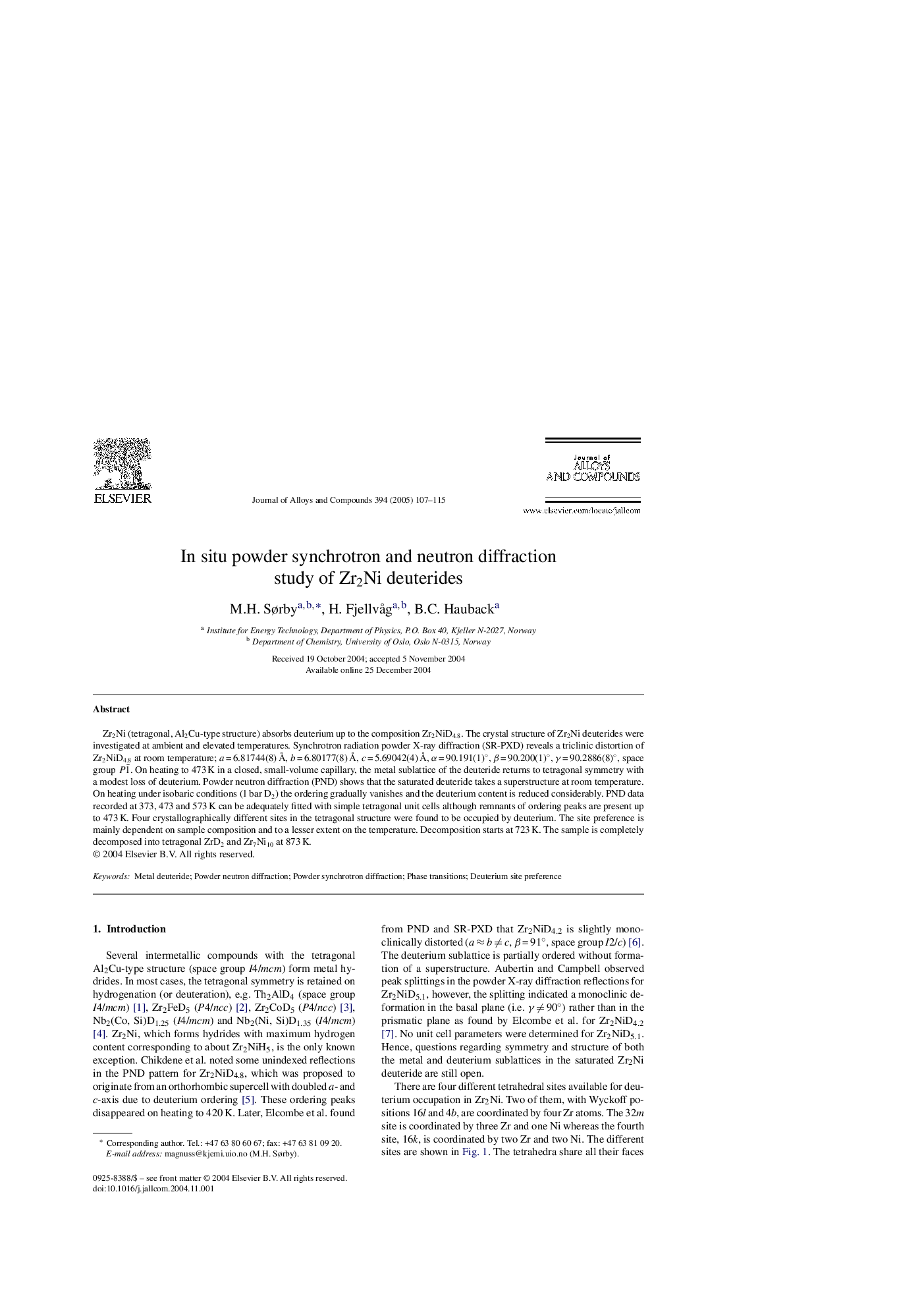| Article ID | Journal | Published Year | Pages | File Type |
|---|---|---|---|---|
| 9803796 | Journal of Alloys and Compounds | 2005 | 9 Pages |
Abstract
Zr2Ni (tetragonal, Al2Cu-type structure) absorbs deuterium up to the composition Zr2NiD4.8. The crystal structure of Zr2Ni deuterides were investigated at ambient and elevated temperatures. Synchrotron radiation powder X-ray diffraction (SR-PXD) reveals a triclinic distortion of Zr2NiD4.8 at room temperature; a = 6.81744(8) Ã
, b = 6.80177(8) Ã
, c = 5.69042(4) Ã
, α = 90.191(1)°, β = 90.200(1)°, γ = 90.2886(8)°, space group P1¯. On heating to 473 K in a closed, small-volume capillary, the metal sublattice of the deuteride returns to tetragonal symmetry with a modest loss of deuterium. Powder neutron diffraction (PND) shows that the saturated deuteride takes a superstructure at room temperature. On heating under isobaric conditions (1 bar D2) the ordering gradually vanishes and the deuterium content is reduced considerably. PND data recorded at 373, 473 and 573 K can be adequately fitted with simple tetragonal unit cells although remnants of ordering peaks are present up to 473 K. Four crystallographically different sites in the tetragonal structure were found to be occupied by deuterium. The site preference is mainly dependent on sample composition and to a lesser extent on the temperature. Decomposition starts at 723 K. The sample is completely decomposed into tetragonal ZrD2 and Zr7Ni10 at 873 K.
Related Topics
Physical Sciences and Engineering
Materials Science
Metals and Alloys
Authors
M.H. Sørby, H. Fjellvåg, B.C. Hauback,
